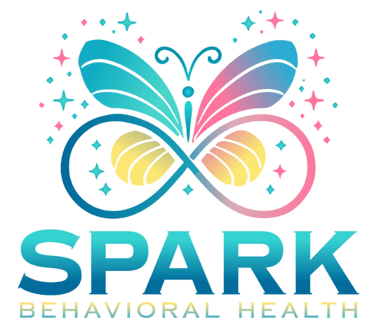
Addressing Challenging Behaviors Through ABA: What Parents Should Know
Learn how ABA Services guide parents in managing challenging behaviors and fostering positive change for children’s development.
PARENTS THERAPY
Timnit Yikealo
Learn how ABA Services guide parents in managing challenging behaviors and fostering positive change for children’s development.


Behavioral issues can be a struggle for both children and parents. You might feel emotionally drained or mentally stuck, not knowing what step to take next. Support is out there. Many parents lean towards a strategy called Applied Behavior Analysis. This approach provides parents with a clear, step-by-step plan to help children develop specific behaviors over time.
What is ABA?
Wisconsin introduced a new law this last July requiring insurance plans to provide coverage for ABA therapy to individuals with an Autism diagnosis, on the same basis and subject to the same terms and conditions as coverage provided for other behavioral health services.
Behavioral analysis methods can be applied to the actions of a person, including simple habits. The scope of focus is to change the behavior of bad habits and actions of a person. The focus is always to instruct something meaningful and eliminate useless burdens.
What Are The Causes Of Difficult Behaviors?
Several factors, both quantifiable and unquantifiable, may contribute to children behaving poorly. Below is a series of factors that can significantly affect a child’s behavior.
Even more harmful is the label of having a developmental disorder. Often, these individuals resort to aggressive forms of behavior (screaming and hitting) to express a multitude of unfulfilled needs.
The Benefits of ABA for Kids
Like any other form of therapy, there are goals, skill sets, and milestones that a child is expected to achieve through therapy. Below are some of the more essential skills that the children will obtain through ABA services.
Positive Reinforcement
The best way to understand positive reinforcement is as a crucial aspect of ABA. It can be illustrated through the example of children being awarded tokens for performing a critical and useful task. Tokens as rewards serve to be beneficial motivation to encourage compliance.
Guided Instructions
ABA Therapy helps children learn complex things like brushing their teeth or properly listening and talking to their peers by breaking tasks into manageable parts.
Consistent Repetition
Children learn automaticity by repeatedly practicing tasks. It may take time, but children master what was once challenging and do these tasks automatically.
Assessing Development
There is an ongoing assessment of the child’s milestones, and the therapist documents progress, which enables them to adjust strategies on the fly to remain responsive.
What Should Parents Expect From ABA Therapy Sessions?
Parents share their concerns with the therapist, after which the therapist conducts the parent and child interview and decides on priority behaviors. After this step, the therapist sets the goals and designs the assessment to meet the goals.
Parents are engaged and are collaborating with the therapist.
As for where the sessions may occur, these could be at the child’s home, at school, or in a clinic. The duration could be anywhere between one hour to several.
Helpful parent involvement is important. Parents may be required to:
Attend sessions
Teach and review skills learned in sessions
Provide relevant information about the patient to the therapist
Well-planned therapy begins with collaborative approaches to therapy from the very onset.
ABA Therapy for Parents Guide
Help is always available, but applying to ABA programs is challenging. Here are some strategies to help you think about during the process of starting on the right foot.
Stay Calm: Do not expect to see immediate changes, and that is fine.
Clarification: How you interpret information is the most important, and this is your chance to be clarified.
Stick to the Guide: Expect good and bad days; this is your best guide to your days.
Respond to the guides: Any progress, even if it feels small, is noteworthy.
Respire: Caring for others is important, even if it is caring for yourself.
Benefits of ABA Services
Some of the most significant advantages are not immediately apparent. Here are some of the most noticeable changes for your quick reference.
Articulation.
Aggression and tantrums decreased.
Improved task completion.
Increased skills for social interactions and independence.
Strengthening Family Bonds
In this section, we explain the advantages that we illustrate as benefits aligned with a single journey for every child. But we know the journey is different for every child, and in this case, it requires persistence.
Myths Of ABA
Clinic treatment that is based on the “Applied Behavioral Analysis” method has, for a long time, carried the stigma of being ineffective. Most think that ABA is a single treatment method.
Like many others, this is one of the most common misunderstandings about ABA: that it is a standardized treatment. It is the opposite of this. ABA is meant for every child as it seeks to foster and build a bond with the child and the therapist.
An even more common mistaken belief is that ABA is exclusively practiced for autism. While this is true for a good number of cases, children with ADHD, anxiety, and other challenges also benefit.
But also, ABA is not about children being made to comply with a set of rules and expectations. It is aimed at assisting the children to make progress. Children are simply being enabled to function at the level of their potential.
Considerations for a Suitable ABA Provider
A wide range of available ABA services has different offerings. Consider the following:
Professionals holding relevant certifications
Tailored approaches for each child
Active engagement in The Conversation for Coordination, or parenting, as relevant
Priority on Kindness and Respect
Feel free to voice any concerns or questions on your mind as the right provider guides you through the entire process.
ABA Therapy Applied in the School and Home Environment
For autism treatment for children, the treatment does not stop at the session. The parents and teachers can apply the principles in their routines.
Through clear directions, commendation, and choice, you can empower a child. Greater support can be enabled when all caregivers are on the same page and use the same approaches.
Conclusion
Dealing with behavioral problems will always be a difficult endeavor. Still, behavior modification is possible with the right resources. ABA Services offers children and their caregivers simple and effective strategies. It is not a fast solution, but with time and effort, the long-term rewards are significant.
There is always help available. Many have traveled this path before and used ABA. No one needs to struggle alone.
FAQs
What age is best for starting ABA?
ABA can be beneficial at any age, but is best when started at a younger age. Many children start receiving help around the ages of 2 or 3.
How long does ABA therapy last?
All children are different; some will benefit in a few months, and some children will need help for several years.
Is ABA only for autism?
No. While ABA is most known for its application with young children with autism, it is also beneficial for children with ADHD, learning disabilities, and other behavioral challenges.
Can parents do ABA at home?
Absolutely! Parents can help their children with ABA techniques from home with the right instruction and training.
Do children undergoing treatment need to behave a certain way?
Not. With gentle approaches, skills are taught and learned within ABA therapy. The intention is to help the child blossom and not to fit them into a box.
Recent Posts
Receive the latest news in your email


